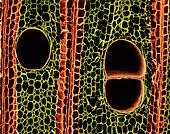Trees are found in a huge variety across the globe. Depending on the climate and temperature along with several other essential factors, trees grow in hot, cold, and mild areas. For centuries, tree wood has been used for medicinal purposes, constructing boats and living spaces. Today, they are used to make wooden floors, paper, tables, and even bridges. The application of tree wood goes beyond that as consumers look for different shades, colors, and types to create new standards and trends.
Furthermore, the utilization of tree wood depends on the weight as well. In some cases, the lightest wood is required while in others, the heaviest. Therefore, let us take you through the lightest and the heaviest tree woods in the world.
Balsa Tree: The lightest Wood
Balsa wood is endowed with many advantages. For instance, balsa wood could be used to make models. It is so soft that you can easily cut it with a craft knife instead of a saw. At the same time, you would want to make the wood a bit stronger, and that is possible as well. Balsa wood could be strengthened to make it reinforced wood so that it is able to support the heavier weight. Therefore, you are getting the best of both worlds i.e., softness and strength.
Since balsa wood is very light, its weight allows it to float on water. With that being said, it could be used to make models for boats, ships, and even surfboards. Today, balsa wood has become popular for the very same reason. The combination of strength and lower density makes the application of balsa wood possible to many different areas.
If you intend to utilize balsa wood for your projects, it is important that you check its flexibility. For heavier projects, you will need to strengthen the wood. Furthermore, you could bend the wood to check its flexibility. Generally, the stronger the wood is, the less flexible it would be.
Black Iron Wood: The heaviest wood
Black Iron Wood is so dense that its green twigs will sink in water as well. It is considered as one of the densest woods in the world. Furthermore, it resists termites, disease, and will outlast salt spray better as compared to iron. However, even though it is a very strong wood, hurricanes are able to destroy them. It is also termed as Leadwood because when it is cut, it gives off the aroma similar to that of molten lead. In the rural Caribbean, it is still used to make tools and weapons such as arrow, bows, and lances
Traditional uses of Ironwood Tree
- A particular type of Ironwood Tree, M.ferrea, has been used traditionally for its anti-asthmatic, cardiotonic, purgative, anthelmintic and blood purifier properties.
- Dried flower buds happen to be anti-dysenteric and are used to treat dysentery with mucus.
- Dried flowers are hemostatic, anti-inflammatory, and stomachic. It is used in bleeding, coughing, and Metrorrhagia.
- Leaves are applied to the forehead to treat severe colds.
- The roots of the herb are used as an antidote for snake poison.
- In Singapore, the ashes of the leaves were used as a lotion for sore eyes.
Both extremes present an interesting contrast and it is fun to know. The lightest wood is that of the balsa tree, which grows principally in tropical South American countries like Ecuador and Costa Rica. The tree grows rapidly and decays quickly.
There are different kinds of balsa wood. The lightest variety is so porous and the cell walls are so thin that around 75% of its volume is air. This is evident from the greatly enlarged photograph of its internal structure shown here. No wonder a cubic meter of such wood weighs only about 40 kilograms.
Compare it with the black ironwood which has a density of 1,490 kilograms per cubic meter. Now, here’s something to wonder about: The black ironwood which comes from the South African tree of the same name, has a specific gravity of 1.49. This means that unlike all other kinds of wood, it would sink in water.
The balsa wood is an excellent construction material for model airplanes, though nowadays, it is being substituted by Styrofoam.
Related posts:
- Which are the tallest plants and trees in the world?
- Why are some plants insectivorous, or carnivorous?
- Why do trees stop growing after reaching a certain height?

